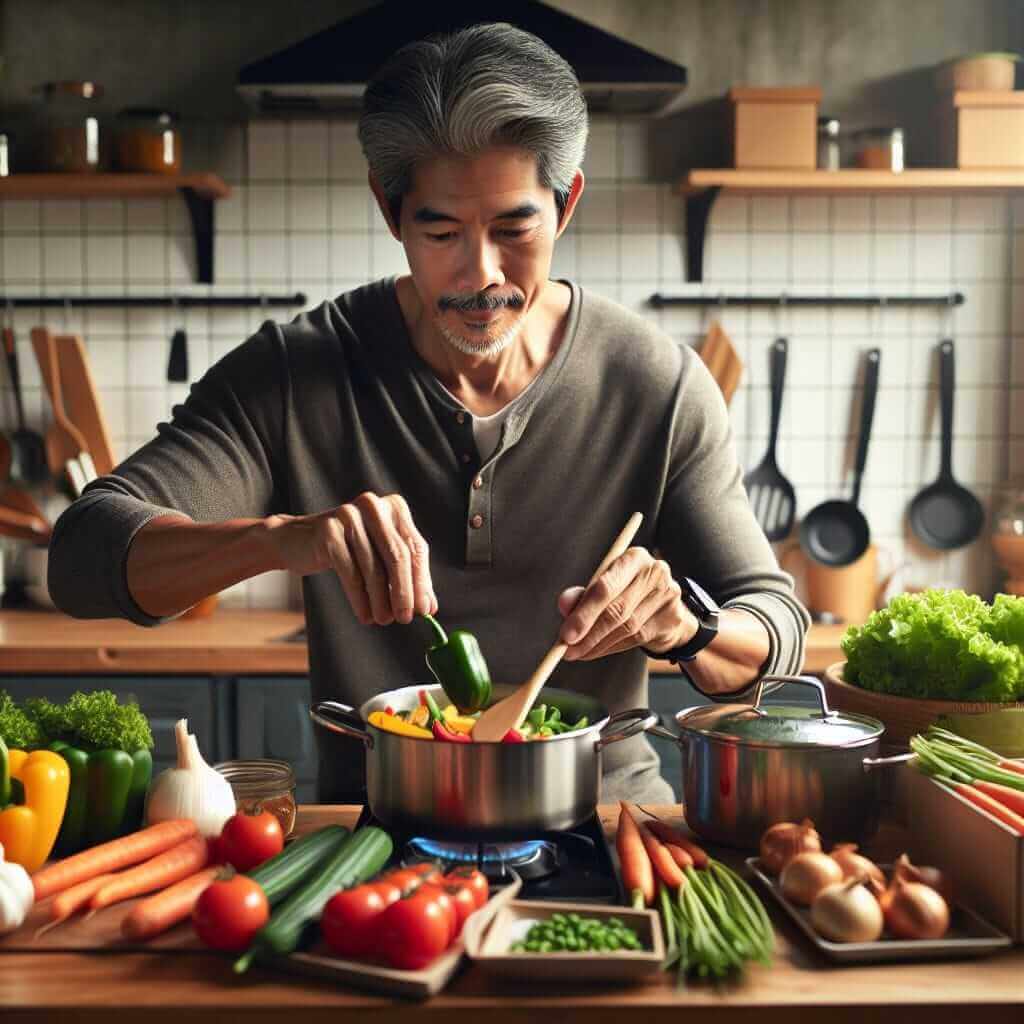The IELTS Speaking test is pivotal in assessing a candidate’s English proficiency. It evaluates fluency, coherence, pronunciation, grammar, and vocabulary. Questions like “Describe a meal you cooked for someone” are fairly common in the exam. Mastering these can significantly elevate your speaking score.
IELTS Examiners seek specific attributes:
- Clear and coherent responses.
- Relevant examples and elaborate details.
- Using a range of vocabulary and grammatical structures.
- Natural pronunciation and fluency.
Part 1: Introduction and Interview
In Part 1, examiners often ask about your daily life or familiar topics. Below are some example questions and responses:
Common Part 1 Questions
- What kind of food do you like to eat?
- How often do you cook meals at home?
- Do you enjoy trying new recipes?
Suggested Response to a Part 1 Question
Question: How often do you cook meals at home?
Answer:
“I cook meals at home almost every day. I find it not only a healthier option but also therapeutic. I particularly enjoy experimenting with diverse cuisines and trying out new recipes. Cooking allows me to maintain a balanced diet and indulge in my passion for culinary arts.”
Part 2: Cue Card and Long Turn
In Part 2, you must speak for 1-2 minutes on a given topic from a cue card. Let’s delve into a relevant cue card topic.
Cue Card: Describe a Meal You Cooked for Someone
You should say:
- What the meal was
- Who you cooked it for
- Why you cooked it
- And explain how you felt about it
Sample Answer
“I’d like to talk about a meal I cooked for my friend’s birthday last year. The meal was a three-course dinner: a starter of creamy mushroom soup, the main course was grilled salmon with a side of asparagus and mashed potatoes, and for dessert, I made a classic chocolate mousse.
I cooked this meal for my close friend Sarah. It was her 30th birthday, and she loves seafood, so I decided to make something special for her. I knew this would make her day memorable, as dining out was not an option due to pandemic restrictions.
I felt immensely proud and satisfied with how everything turned out. The preparation was quite intensive as I wanted each dish to be perfect. Sarah was overjoyed and repeatedly mentioned how delicious everything was. The genuine appreciation on her face made the entire effort worthwhile. It reinforced my love for cooking and showed me the joy of sharing one’s culinary skills with loved ones.”
Follow-Up Questions and Sample Responses
Follow-Up Question 1:
Examiner: What challenges do people face when cooking for others?
Response:
“When cooking for others, people often face challenges such as accommodating dietary restrictions and preferences, ensuring that the food is cooked properly and is delicious, and managing their time effectively to prevent the meal from being delayed.”
Follow-Up Question 2:
Examiner: How has modern technology influenced cooking?
Response:
“Modern technology has significantly transformed cooking. The advent of smart kitchen appliances, such as programmable pressure cookers and smart ovens, has simplified the cooking process. Additionally, the availability of online recipes and cooking tutorials has made it easier for home cooks to try new dishes and improve their culinary skills.”
Part 3: Two-Way Discussion
In Part 3, the questions become more abstract and require critical thinking and elaboration.
Discussion Questions and Sample Responses
Discussion Question 1:
Examiner: Do you think cooking is an important skill for people to learn? Why?
Response:
“Absolutely, cooking is an essential skill for several reasons. Firstly, it promotes healthier eating habits as individuals can control the ingredients and portion sizes. Secondly, it fosters independence and self-sufficiency, particularly in situations where dining out may not be viable. Additionally, cooking can be a creative and therapeutic hobby that brings joy and a sense of accomplishment.”
Discussion Question 2:
Examiner: How has the role of cooking in domestic life changed over time?
Response:
“The role of cooking in domestic life has evolved significantly. In the past, cooking was primarily seen as a domestic duty often assigned to women. However, in modern times, it has become a shared responsibility and a source of leisure and enjoyment for both men and women. The rise of cooking shows and celebrity chefs has also glamorized cooking, making it a trendy and respected skill.”
Key Vocabulary and Structures for High Scores
Important Vocabulary:
- Wholesome (/ˈhoʊl.səm/): Conducive to or suggestive of good health and physical well-being.
- Example: “I believe in preparing wholesome meals using fresh ingredients.”
- Culinary (/ˈkʌl.ɪ.nər.i/): Relating to cooking or the kitchen.
- Example: “My culinary skills have improved significantly over the years.”
- Therapeutic (/ˌθer.əˈpjuː.tɪk/): Having the power to heal or cure; beneficial for the mind or body.
- Example: “I find cooking to be very therapeutic after a long day.”
Grammatical Structures:
- Complex Sentences: Using subordinating conjunctions such as ‘although’, ‘because’, ‘since’, etc.
- Example: “Although it was challenging, I enjoyed every moment of preparing the meal.”
- Passive Voice: To emphasize the action rather than the subject.
- Example: “The meal was appreciated by everyone who tasted it.”
- Conditionals: To discuss hypothetical scenarios and their outcomes.
- Example: “If I had more time, I would have prepared an additional dessert.”
Tips for Practicing Speaking
- Speak Regularly: Practice speaking English daily, focusing on fluency and coherence.
- Record Yourself: Listening to recordings can help identify areas for improvement.
- Expand Vocabulary: Learn new words and phrases and practice using them in context.
- Mock Tests: Take frequent mock tests to simulate actual test conditions.

By mastering these components and practicing diligently, candidates can optimize their performance in the IELTS Speaking test and aim for a band score of 7 or higher.